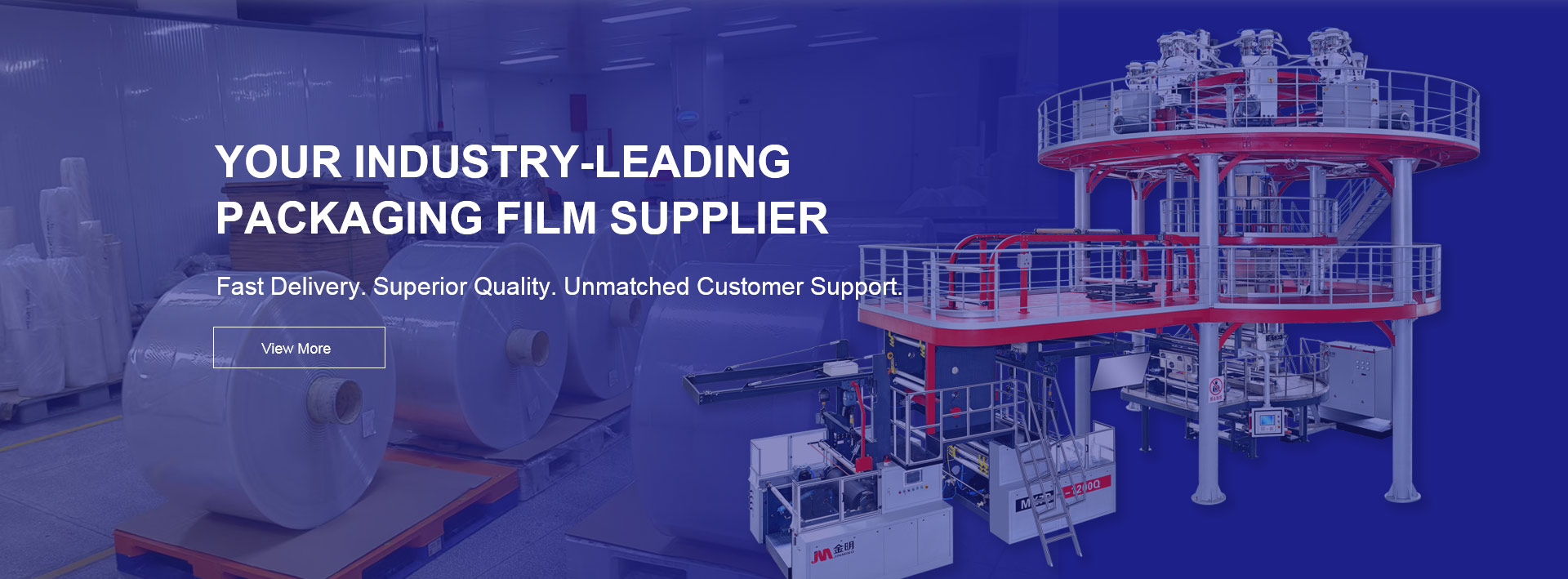
Multilayer barrier packaging films are widely used in food, pharmaceutical, and industrial packaging because they combine several functional layers into a single structure. Each layer serves a specific purpose, from mechanical strength to gas resistance, helping products achieve longer shelf life and better protection during transportation. This article explains the primary materials used in these films and how they work together to create a balanced structure. At the end, a brief recommendation of JINBORUN is included for businesses needing high-quality barrier materials.
A multilayer barrier film is typically made by laminating or co-extruding several polymer layers. Each polymer contributes one core function such as barrier performance, sealing efficiency, toughness, or printability. Instead of using a single plastic, manufacturers strategically combine materials to deliver high resistance against oxygen, moisture, aroma loss, and physical damage. Most films contain three to nine layers depending on application requirements, and flexible packaging for sensitive products often uses even more.
Polyethylene is one of the most common outer and inner layers. It provides sealing properties, flexibility, and good moisture resistance. PE is often used as the heat-seal layer because it melts at a relatively low temperature, allowing stable sealing for both food and industrial packaging. Variants such as LDPE and LLDPE are selected depending on whether softness or puncture resistance is required.
Polypropylene offers high stiffness, clarity, and good water-vapor resistance. It is frequently used as a structural layer to improve rigidity and enhance print appearance. BOPP films are especially popular for snack packaging where strength and transparency matter. PP also tolerates higher temperatures than PE, which benefits applications like sterilizable pouches.
PET is known for its dimensional stability and excellent mechanical strength. It also provides good oxygen and aroma protection when used as part of the outer structure. Many multilayer films use PET as the print carrier layer due to its smooth surface and high heat resistance, which helps maintain shape during sealing and processing.
Nylon adds toughness, puncture resistance, and durability to the film structure. It performs well in vacuum-pack applications where the film must contact sharp edges like bones or hard food surfaces. PA also has moderate oxygen barrier capability, making it useful for extending the shelf life of meats and cheese.
EVOH is one of the most important materials for achieving high oxygen barrier performance. Even in micro-thin layers, it dramatically reduces oxygen transmission rates, helping prevent oxidation and spoilage. EVOH layers must be protected by PE or PP because they lose barrier performance in high humidity, so they are usually placed between moisture-resistant layers.
Metal layers significantly increase light, moisture, and oxygen resistance. Aluminum foil provides a nearly complete barrier but reduces flexibility. Metallized PET or metallized OPP gives a moderate but effective barrier while maintaining flexibility and lower weight. These layers are widely used in coffee, dry food, and pharmaceutical packaging.
Because not all polymers bond naturally, tie layers help connect materials such as EVOH, PA, and PE. They ensure mechanical strength and prevent delamination during use. Tie layers are usually made from modified polyolefins designed to maintain stability under sealing pressure.
Below is a simple representation of how these materials may be combined:
| Layer | Material | Primary Function |
|---|---|---|
| Outer | PET or BOPP | Printing, heat resistance |
| Middle | EVOH or PA | Oxygen barrier and strength |
| Inner | PE | Sealing and moisture resistance |
This arrangement varies greatly depending on packaging needs, but it highlights how each layer is selected for a specific protective purpose.
Multilayer films offer stronger protection than single-layer plastics. They increase product shelf life, reduce risk of contamination, and maintain aroma and flavor. They also help brands lower material usage by using thin engineered layers instead of thick single-material sheets. For industries focusing on food preservation, industrial chemicals, fertilizers, and pharmaceuticals, multilayer structures provide a reliable combination of performance and efficiency.
For companies looking for dependable multilayer barrier materials and custom packaging solutions, JINBORUN provides a range of professional films engineered for durability, freshness protection, and market-ready appearance. Their products are suitable for food packaging, industrial applications, and specialized storage needs.
Multilayer barrier packaging films are made from a carefully designed combination of polymers such as PE, PP, PET, nylon, and EVOH, along with optional aluminum or metallized layers. Each material plays a distinct role, allowing the film to deliver strong mechanical performance and excellent protection against oxygen, moisture, and physical stress. These films continue to support modern packaging demands by providing safer, longer-lasting product protection.